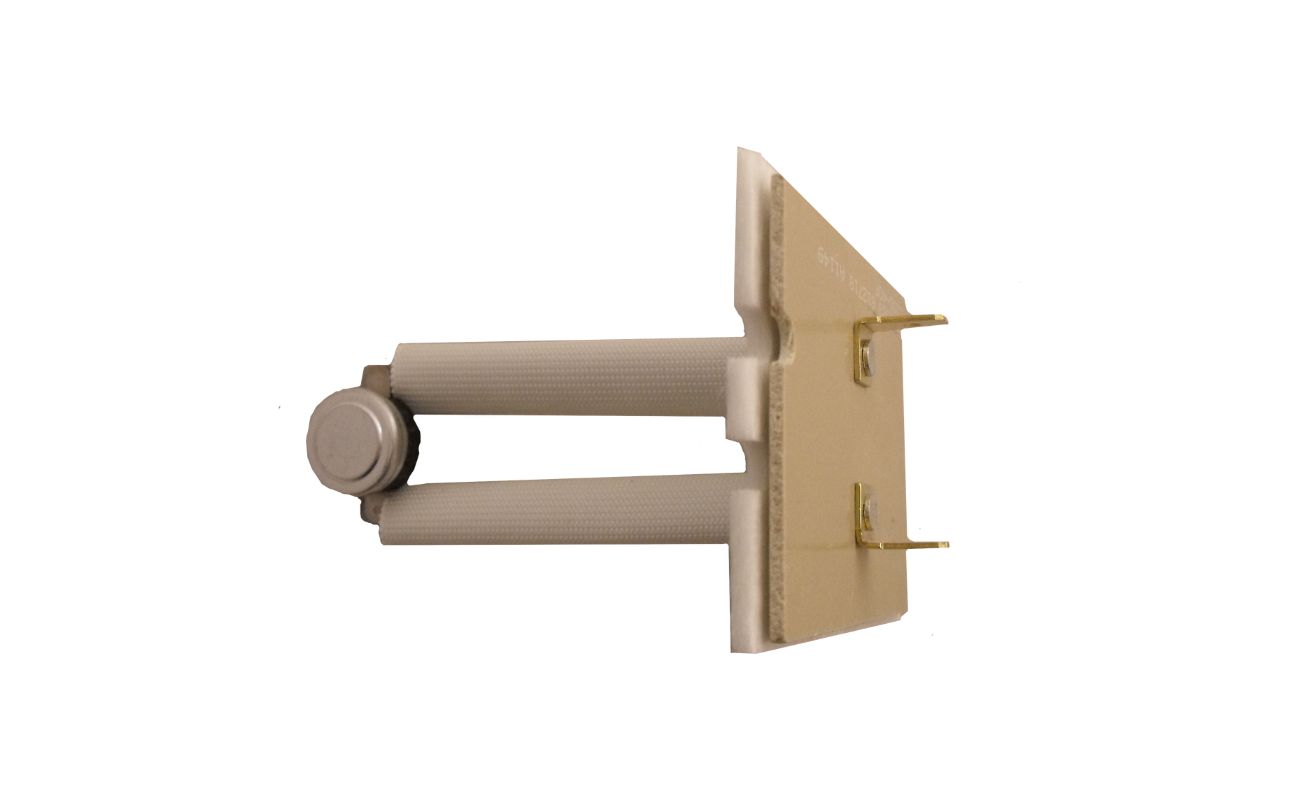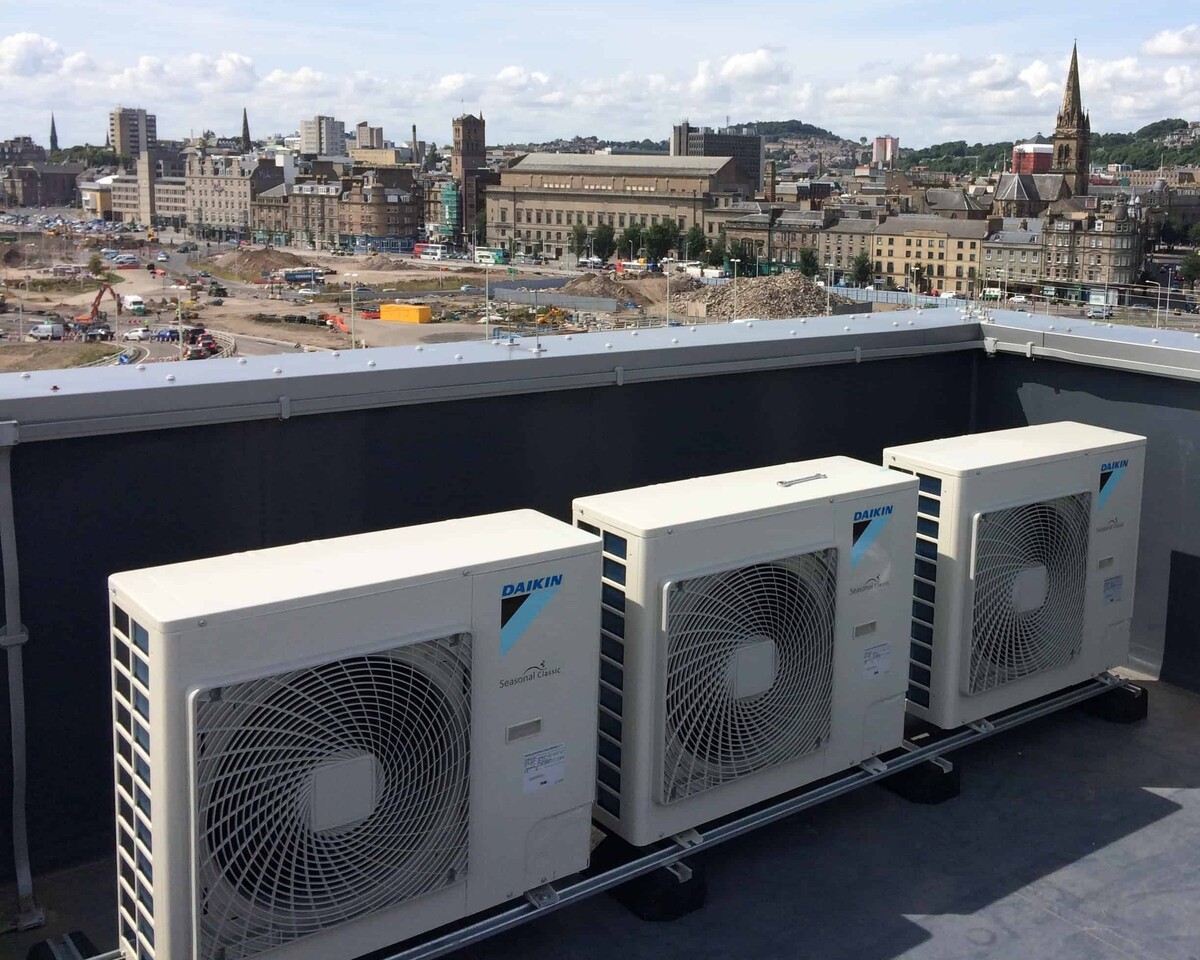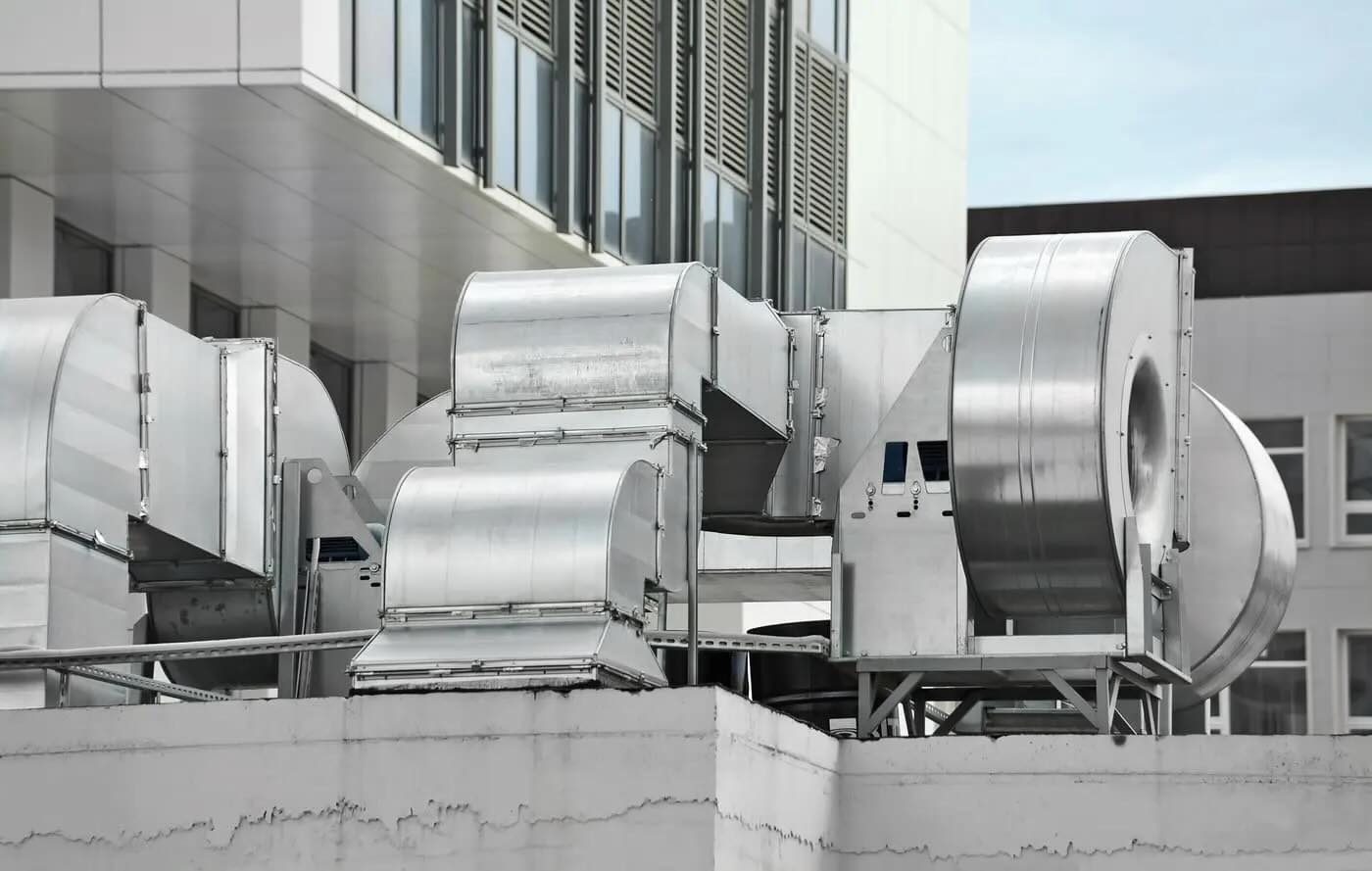Home>Home Appliances>Home Automation Appliances>What Is The Purpose Of A Plenum Thermostat?


Home Automation Appliances
What Is The Purpose Of A Plenum Thermostat?
Published: January 1, 2024
Discover the essential role of a plenum thermostat in home automation appliances. Learn how it optimizes heating and cooling systems for efficient temperature control.
(Many of the links in this article redirect to a specific reviewed product. Your purchase of these products through affiliate links helps to generate commission for Storables.com, at no extra cost. Learn more)
Introduction
Welcome to the world of home automation, where modern technology seamlessly integrates with everyday living to enhance comfort and convenience. In this realm, the use of plenum thermostats is a significant advancement that revolutionizes the way we control heating and cooling systems within our homes. As we delve into the intricacies of plenum thermostats, you will gain a comprehensive understanding of their purpose, functionality, and the myriad benefits they offer. Whether you are a homeowner seeking to optimize your HVAC system or a technology enthusiast exploring the latest innovations, this article will equip you with valuable insights into the world of plenum thermostats.
Key Takeaways:
- Plenum thermostats are like the conductors of an orchestra, ensuring that the temperature in your home is just right by coordinating the heating and cooling systems to maintain comfort and save energy.
- Using plenum thermostats in your home is like having a smart, energy-saving assistant that automatically keeps every room at the perfect temperature, making your home more comfortable and eco-friendly.
Read more: What Is A Plenum Ceiling
Understanding Plenum Thermostats
Before delving into the purpose and functionality of plenum thermostats, it is essential to grasp the fundamental concept behind these innovative devices. A plenum thermostat is a specialized component of a heating, ventilation, and air conditioning (HVAC) system, designed to regulate the temperature within the plenum chamber. The plenum chamber, typically located near the air handler, serves as a central distribution point for heated or cooled air within the HVAC system.
Plenum thermostats play a pivotal role in maintaining optimal temperature levels within the plenum chamber, ensuring that the air circulated throughout the home is consistently comfortable. These thermostats are engineered to monitor the temperature of the air in the plenum and activate the heating or cooling system as needed to achieve the desired climate control.
By understanding the core function of plenum thermostats, homeowners and HVAC professionals can harness their capabilities to achieve precise and efficient temperature regulation within residential and commercial spaces. This foundational knowledge sets the stage for exploring the specific purpose and operational mechanics of plenum thermostats, shedding light on their indispensable role in modern HVAC systems.
The Purpose of a Plenum Thermostat
At the heart of every HVAC system lies the crucial task of maintaining optimal indoor temperatures for comfort and energy efficiency. This is where the plenum thermostat emerges as a key player, serving a distinct purpose in the seamless orchestration of heating and cooling processes. The primary purpose of a plenum thermostat is to accurately monitor and regulate the temperature within the plenum chamber, thereby ensuring that the air distributed throughout the building is consistently at the desired comfort level.
By effectively controlling the temperature within the plenum, these thermostats enable the HVAC system to respond promptly to temperature fluctuations, activating the heating or cooling mechanisms as necessary to maintain the preset comfort settings. This precision in temperature regulation is essential for promoting a comfortable indoor environment while optimizing energy consumption.
Furthermore, plenum thermostats contribute to the overall efficiency of the HVAC system by facilitating the coordination of heating and cooling operations. When the temperature within the plenum deviates from the set parameters, the thermostat signals the heating or cooling equipment to initiate the appropriate corrective measures. This proactive approach not only enhances comfort but also minimizes energy wastage by preventing prolonged temperature deviations.
Another vital purpose of plenum thermostats is to ensure uniform temperature distribution throughout the building. By monitoring the temperature at the central point of air distribution, these thermostats play a pivotal role in maintaining consistency across different areas, preventing hot or cold spots that can compromise comfort and energy efficiency.
In essence, the purpose of a plenum thermostat transcends mere temperature regulation; it encompasses the optimization of HVAC performance, energy conservation, and the delivery of consistent comfort to occupants. As we delve deeper into the mechanics of plenum thermostats, their pivotal role in achieving these objectives will become increasingly apparent.
A plenum thermostat is used to regulate the temperature in the air handling unit’s plenum, ensuring that the air being distributed throughout the building is at the desired temperature. It helps maintain comfort and energy efficiency.
How Plenum Thermostats Work
Understanding the operational principles of plenum thermostats unveils the intricate mechanisms that enable these devices to fulfill their pivotal role in HVAC systems. Plenum thermostats function as temperature-sensitive switches, utilizing advanced sensors and control mechanisms to regulate the heating and cooling processes within the plenum chamber.
When the ambient temperature within the plenum deviates from the predefined setpoint, the plenum thermostat detects this variation through its temperature sensors. These sensors are strategically positioned within the plenum to capture accurate readings of the air temperature. Upon detecting a deviation from the desired temperature range, the thermostat triggers the corresponding HVAC equipment to initiate the appropriate heating or cooling action.
The activation of the heating or cooling system is achieved through the integrated control mechanisms of the plenum thermostat. These mechanisms are designed to interface with the HVAC equipment, sending signals that prompt the heating or cooling units to engage and adjust the temperature within the plenum. Whether it’s activating the furnace to raise the temperature or engaging the air conditioning system to lower it, plenum thermostats play a pivotal role in orchestrating these temperature-modifying processes.
Moreover, plenum thermostats are engineered to ensure precise and responsive temperature regulation. This is accomplished through the integration of advanced control algorithms and feedback mechanisms that enable the thermostat to continuously monitor and adjust the temperature within the plenum chamber. By leveraging these sophisticated control features, plenum thermostats can swiftly and accurately modulate the HVAC system’s operation, maintaining the desired temperature levels with remarkable precision.
Furthermore, the seamless coordination between the plenum thermostat and the HVAC equipment is instrumental in optimizing energy efficiency. When the thermostat detects that the temperature within the plenum has reached the desired setpoint, it signals the HVAC system to cease the heating or cooling operation, preventing unnecessary energy consumption and promoting energy conservation.
In essence, the functionality of plenum thermostats revolves around their ability to detect temperature differentials, activate the HVAC equipment, and oversee the precise regulation of the plenum chamber’s climate. This harmonious interplay of sensing, control, and coordination underscores the indispensable role of plenum thermostats in maintaining comfortable and energy-efficient indoor environments.
Benefits of Using a Plenum Thermostat
Embracing the utilization of plenum thermostats in HVAC systems yields a host of compelling benefits that encompass enhanced comfort, energy efficiency, and operational convenience. These advantages underscore the significance of plenum thermostats in optimizing the performance and functionality of heating and cooling systems within residential and commercial settings.
- Precision Temperature Regulation: Plenum thermostats excel in maintaining precise temperature control within the plenum chamber, ensuring that the air circulated throughout the building consistently aligns with the desired comfort settings. This precision contributes to a comfortable indoor environment, free from temperature fluctuations that can compromise occupants’ well-being.
- Energy Efficiency: By promptly responding to temperature differentials and activating the HVAC equipment as needed, plenum thermostats play a pivotal role in conserving energy. Their ability to optimize the heating and cooling processes minimizes energy wastage, resulting in reduced utility costs and a more sustainable approach to climate control.
- Uniform Climate Distribution: Plenum thermostats facilitate the uniform distribution of heated or cooled air throughout the building, mitigating the occurrence of uneven temperature zones. This ensures consistent comfort across various areas, eliminating discomfort caused by localized temperature imbalances.
- Operational Efficiency: The seamless coordination between plenum thermostats and HVAC equipment enhances the overall operational efficiency of the heating and cooling system. By effectively managing temperature regulation, these thermostats optimize the performance of the HVAC system, promoting smooth and reliable operation.
- Automated Climate Control: Plenum thermostats automate the temperature regulation process, alleviating the need for manual adjustments and interventions. This automation streamlines the management of indoor climate control, allowing occupants to enjoy consistent comfort without the hassle of constant monitoring and adjustments.
- Enhanced System Longevity: The precise and responsive temperature regulation facilitated by plenum thermostats contributes to the longevity of HVAC equipment. By minimizing temperature fluctuations and unnecessary operational cycles, these thermostats help preserve the integrity and efficiency of the heating and cooling systems.
Collectively, these benefits underscore the instrumental role of plenum thermostats in optimizing the performance, energy efficiency, and comfort levels of HVAC systems. By leveraging the advanced capabilities of plenum thermostats, homeowners and commercial property managers can elevate their indoor climate control to new heights, reaping the rewards of enhanced comfort and sustainable energy management.
Read more: What Is The Purpose Of A Lamp
Conclusion
The evolution of home automation and HVAC technology has ushered in a new era of sophisticated climate control, and at the heart of this transformation lies the indispensable role of plenum thermostats. These specialized devices, designed to regulate the temperature within the plenum chamber of HVAC systems, have redefined the standards of precision, efficiency, and comfort in indoor climate control.
As we’ve explored the purpose, functionality, and benefits of plenum thermostats, it becomes evident that these devices are not merely components of HVAC systems; they are catalysts for elevating the quality of indoor environments. By orchestrating the seamless coordination of heating and cooling processes, plenum thermostats empower homeowners and property managers to achieve optimal comfort while embracing sustainable energy practices.
Furthermore, the advanced capabilities of plenum thermostats pave the way for automated, responsive temperature regulation, alleviating the burden of manual adjustments and ensuring consistent comfort across diverse living and working spaces. This automation, coupled with the energy-saving potential of plenum thermostats, aligns with the growing emphasis on eco-friendly practices and resource conservation in modern building management.
Ultimately, the integration of plenum thermostats into HVAC systems represents a paradigm shift in indoor climate control, offering a harmonious blend of precision, efficiency, and operational convenience. Whether it’s fostering uniform temperature distribution, optimizing energy usage, or prolonging the lifespan of HVAC equipment, plenum thermostats stand as beacons of innovation in the pursuit of enhanced comfort and sustainability.
As we embrace the era of smart homes and intelligent building management, the significance of plenum thermostats in shaping the future of indoor climate control cannot be overstated. Their ability to harmonize temperature regulation, energy efficiency, and operational reliability positions them as pivotal assets in the quest for superior comfort and sustainable living.
In conclusion, the journey through the realm of plenum thermostats unveils a compelling narrative of innovation, efficiency, and transformative impact, shaping the landscape of modern HVAC systems and redefining the benchmarks of indoor comfort. With plenum thermostats at the helm, the pursuit of optimal climate control transcends aspiration and becomes a tangible reality, enriching the lives of occupants and fostering a more sustainable approach to building management.
Frequently Asked Questions about What Is The Purpose Of A Plenum Thermostat?
Was this page helpful?
At Storables.com, we guarantee accurate and reliable information. Our content, validated by Expert Board Contributors, is crafted following stringent Editorial Policies. We're committed to providing you with well-researched, expert-backed insights for all your informational needs.















0 thoughts on “What Is The Purpose Of A Plenum Thermostat?”